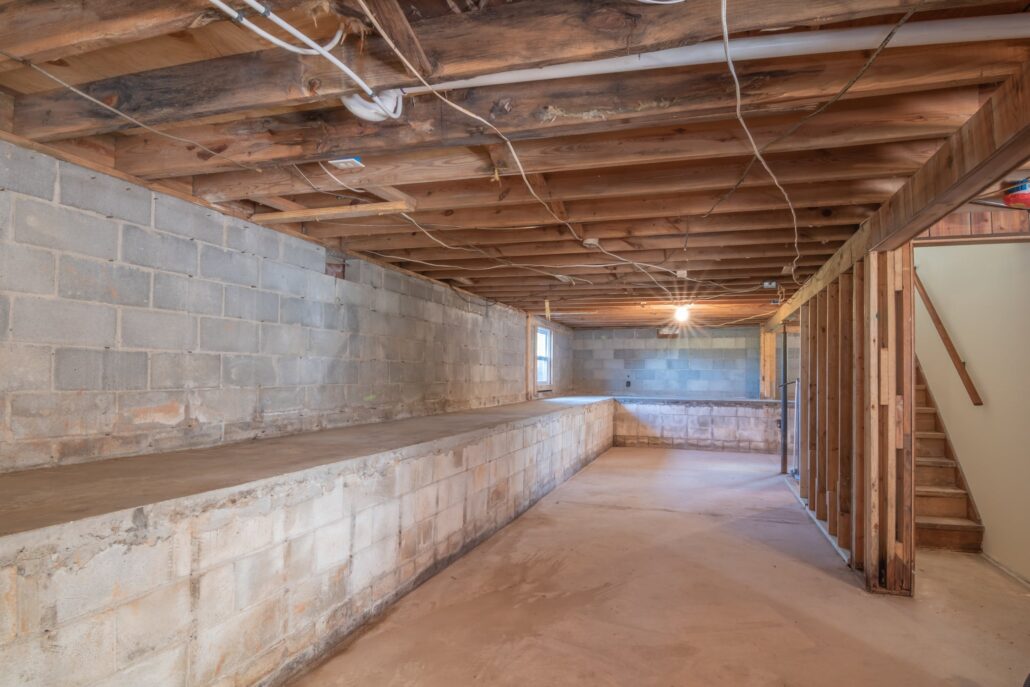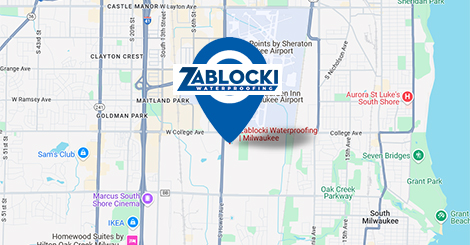If you’re a homeowner, you know how important it is to have a dry and usable basement. Whether you’re thinking about finishing your basement or using it for storage, the last thing you want is for it to be damp, grow mold, or flood. But can you waterproof a basement from the inside, or do you need to excavate the exterior walls to ensure your basement is properly waterproofed? In this blog, we’ll provide some tips and advice on basement waterproofing.
If you’re looking for help with basement waterproofing in Milwaukee, we’ve got you. Click here to contact Zablocki Waterproofing today.
Can You Waterproof a Basement from the Inside?
The short answer is yes, it is possible to waterproof a basement from the inside. However, it’s not a magic solution, and it’s important to understand that interior basement waterproofing is really just putting a band-aid on a more serious problem — water entering your basement. Ideally, you would take steps to waterproof your basement from both the inside and outside but, if your budget is tight, interior waterproofing is an option worth considering.
How Interior Waterproofing Works
Interior waterproofing is accomplished through a variety of methods, including the installation of an interior drainage system, the application of a water-resistant coating, or the use of a vapor barrier.
An interior drainage system involves the installation of a perimeter drain and sump pump system. This solution removes water that penetrates the basement and channels it to a sump basin where a sump pump drains it away from the foundation.
Water-resistant coatings are applied to interior basement walls to create a barrier between the foundation and groundwater. This method can be effective in preventing moisture seepage, but it’s not a permanent solution.
Vapor barriers are used to impede water vapor from penetrating the walls. This method is most effective with poured concrete foundations and can prolong the life of interior finishes such as drywall and insulation.
Repairing Cracks in Basement Walls
Every homeowner’s nightmare is discovering a crack in their basement wall. Cracks can appear gradually, or they can occur suddenly, and they can be caused by various factors such as settling, shifting, or moisture damage. Different methods of repairing cracks exist, including:
- Epoxy injection. This is a common method used to repair cracks in basement walls. With this method, a low-pressure injection of epoxy resin is used to fill the crack entirely. After the injection, a hard and durable surface is formed that prevents water infiltration and reinforces the wall’s structural integrity.
- Carbon fiber reinforcement. This method involves the application of carbon fiber straps to the wall’s surface. The straps are adhered to the surface between injection ports that are located at the top and bottom of the crack. After the straps are applied, an epoxy coating is added, which holds the carbon fiber in place. This process reinforces the wall and distributes the load of external forces.
Limitations of Interior Waterproofing
While interior waterproofing can be a relatively cost-effective solution, it’s essential to understand its limitations. Interior waterproofing doesn’t address the root cause of the problem, which is the exterior drainage system. If gutters and downspouts are not correctly installed or working correctly, water will still make its way into the basement.
Interior waterproofing can also be affected by hydrostatic pressure, which can lead to water infiltration through cracks in the floor or around the edges of the walls.
Interior waterproofing also does not include landscaping interventions that can improve drainage around a home’s foundation. For example, homeowners can use soil to build up the grading around the foundation of the home. They can also install French drains or rain gardens to help collect and guide rainwater away from the base of the home.
Exterior Waterproofing
For a long-term solution, exterior waterproofing is the ideal method of waterproofing your basement. The process involves the excavation around the exterior walls of the foundation and the application of waterproofing membranes, drainage panels, and backfilling.
Exterior waterproofing is a more invasive and costly solution, but the cost is often offset by the long-term benefits. It also addresses the root cause of the problem, which prevents repeated water infiltration and structural damage.
When to Consider Exterior Waterproofing
If you’re experiencing chronic water infiltration in your basement, exterior waterproofing may be the best solution. Additionally, if you’re planning to finish off your basement for additional living space, exterior waterproofing is necessary for the longevity of the space and to prevent moisture damage.
When it comes to basement waterproofing, you’ve got options at every price point. The best option for you is one that addresses the severity of your basement moisture issues. If they’re small, interior, DIY methods might be an adequate fix. If they’re serious, it’s important to consider either exterior waterproofing methods or a combination of the two. If you’re experiencing water infiltration, it’s worth considering both interior and exterior waterproofing solutions. For expert advice and consultation on basement waterproofing, contact Zablocki Waterproofing of Milwaukee.
 By Dale Granbois, co-owner of Zablocki Waterproofing
By Dale Granbois, co-owner of Zablocki Waterproofing
Dale Granbois is the proud co-owner of Zablocki Waterproofing, the premier basement waterproofing and foundation repair service provider in Milwaukee. Our team of experienced professionals offer a variety of services from complete basement waterproofing solutions to structural foundation repairs -all designed to keep your home or business safe and dry. Let us save you from expensive headaches caused by water damage and give you peace of mind with a safe and secure property. Contact us today for more information!






